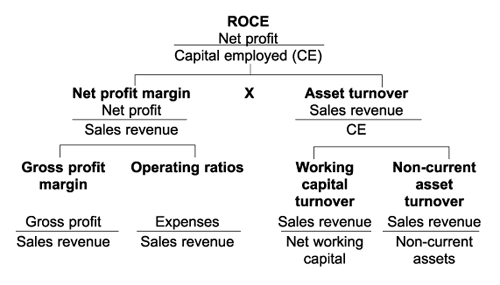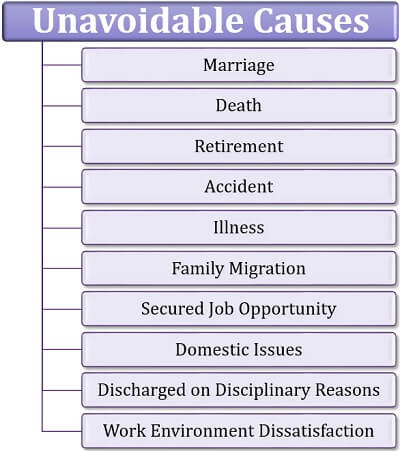

The workers are sometimes compelled to depart from the organization, for the inevitable reasons. Some of the significant issues are related to improper wages, lack of healthcare facilities, inappropriate fringe benefits, cold relations with the management and many others as listed below: Unavoidable Causes

The factors that are related to the organizational facilities and working conditions, the ones which the management could modify to retain the workforce are considered as preventable causes. Let us now go through the critical reasons behind the labour turnover:

When we talk about the reasons behind a high labour turnover, we come across the factors which are under control and others which are beyond the regulation of the organization. The entities, therefore, take up human resource as an integral part of the business. What a miserable season.A high labour turnover rate is considered to be unfavourable for the organization’s stability and can even result in a temporary shutdown or strike. 2 per game! This team gained 12 turnovers and lost 36. Just in case you're interested in the extremes: Underachievers - 4 years in a row: (actual wins - projected wins) Team

I would argue that it's pretty simple - good teams have the talent and the coaching to overcome a few turnovers. Overachievers - 4 years in a row: (actual wins - projected wins) Team So what does it mean if a team wins more games that the turnover margin formula says they should? Good coaching? Talent overcoming adversity? Dumb luck? I think there are so many factors that go into a small sample size college football season that it's difficult to isolate a definitive answer here, but let's take a look at the programs that have overachieved their projected wins in each of the last four seasons: Let's look at the top/bottom 20 achievers from the 2012 season. Going further, we can see which teams over- or under-achieved their projected win total. Given the formula from the chart, we can determine how many games each team should have won in a season based solely on their turnover margin. For every 0.5 in turnover margin that they are able to achieve, you can expect around 1.25 extra wins. Let's say your team is talented enough to win around 6 games. I think the best way to look at this is as follows. So if your team averages a turnover margin of around +1, you can expect them to win around 8-9 games (all other things equal - and they never are). I adjusted the formula's output from a winning percentage to number of wins in a 12-game schedule: Turnover Margin The trendline gives us a formula that tells us how many wins a team with a turnover margin of "x" should achieve given the historical data. The R squared (coefficient of determination) for the trendline shown in the chart is 37%, meaning that turnovers "explain" 37% of the win total data in this model. The relationship is somewhat strong, but obviously there are many other factors that go into winning percentage. It's not shocking to see that on average, a higher per-game turnover margin leads to more wins. Per-game turnover margin is on the X-axis and winning percentage is on the Y-axis: Each dot represents a team in that four-year period. This chart shows how turnover margin correlates to winning percentage over the past four seasons in college football (2009 - 2012).


 0 kommentar(er)
0 kommentar(er)
